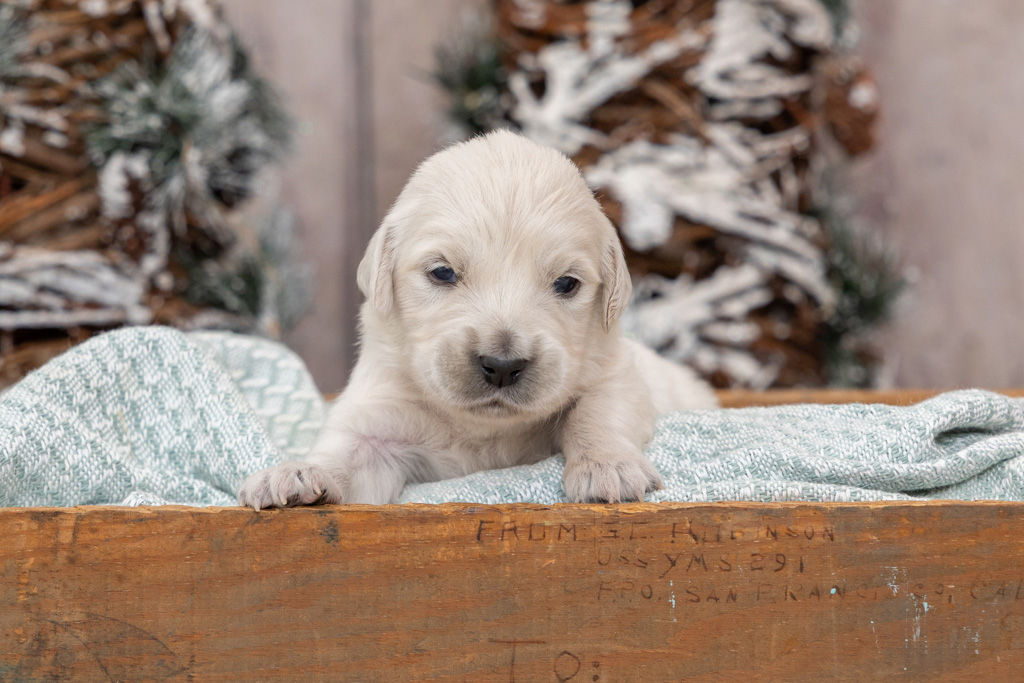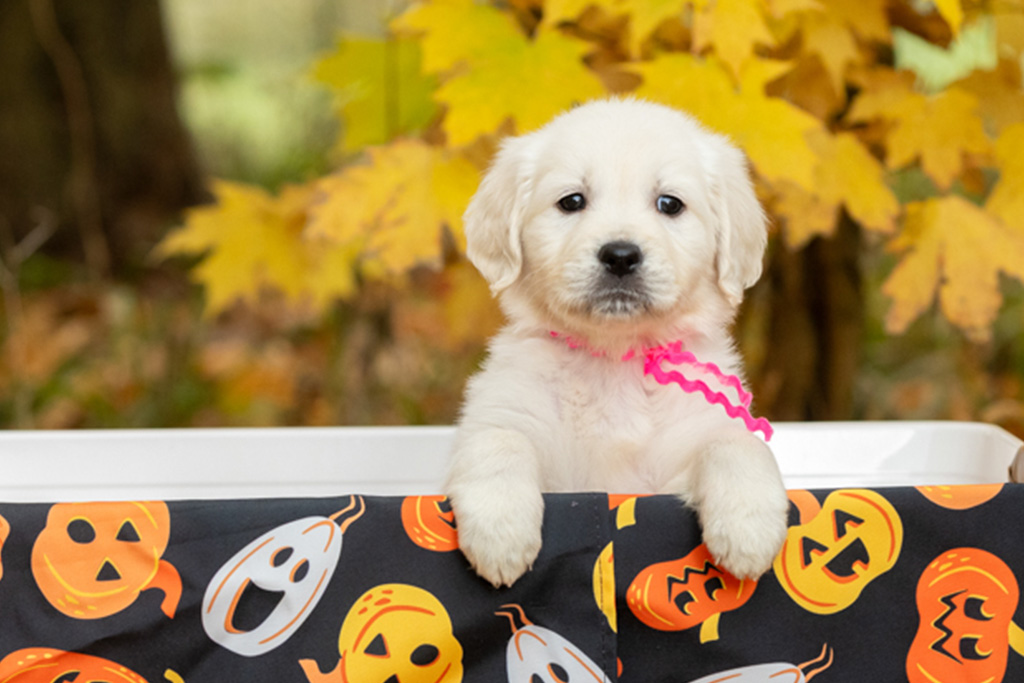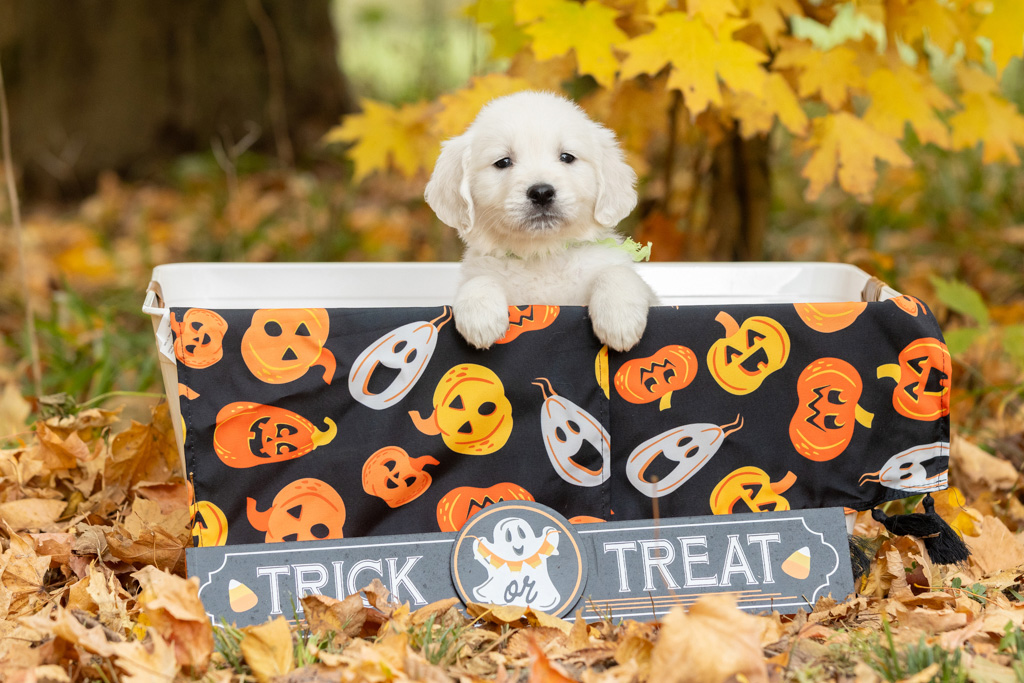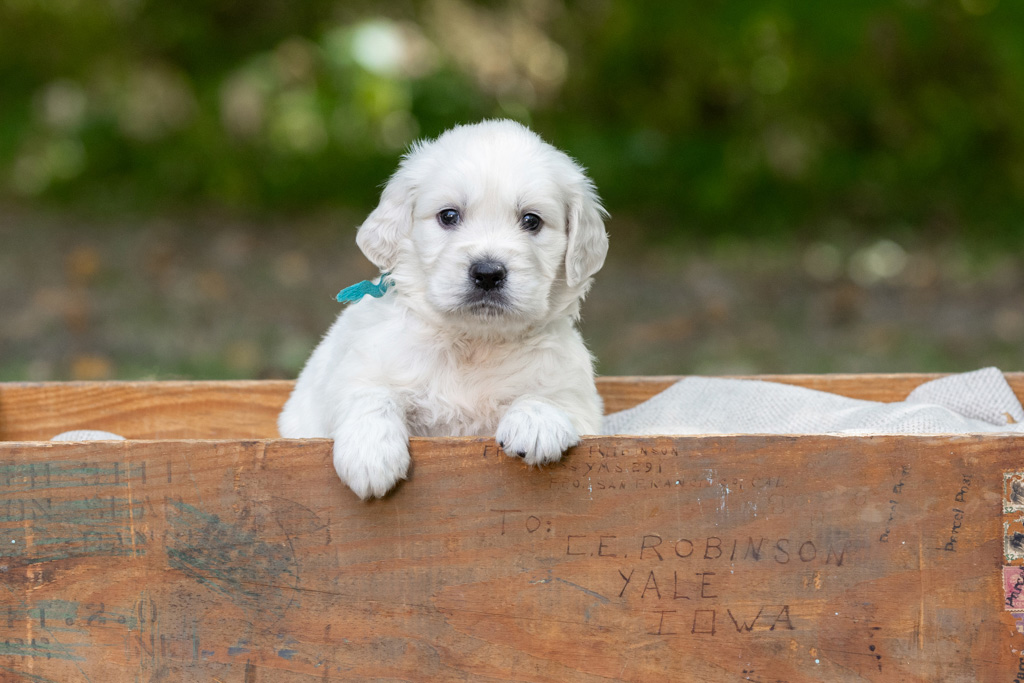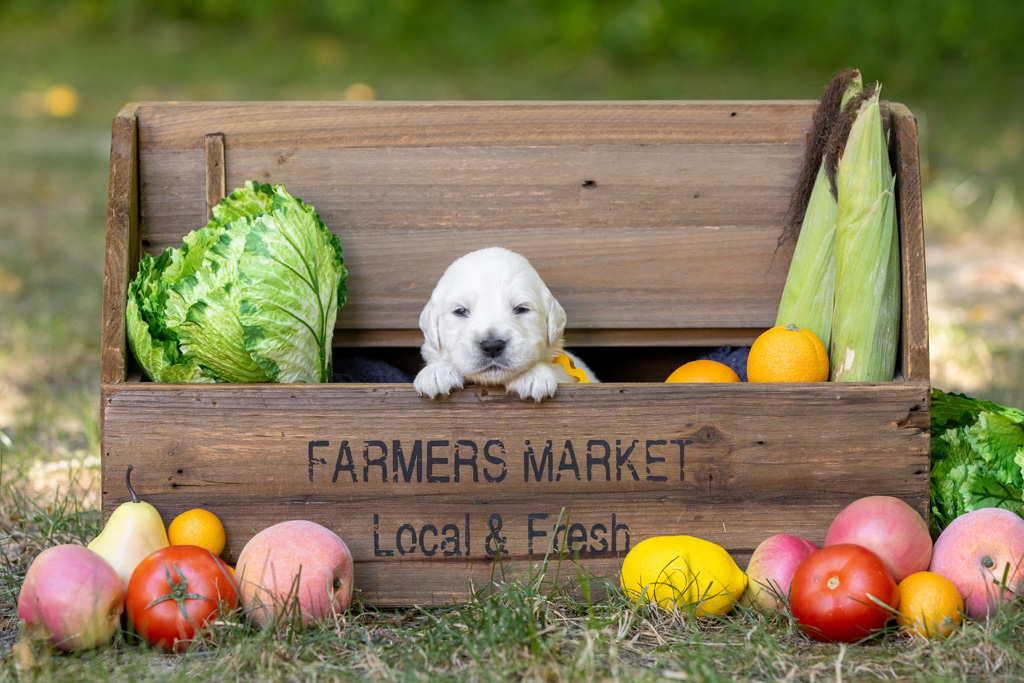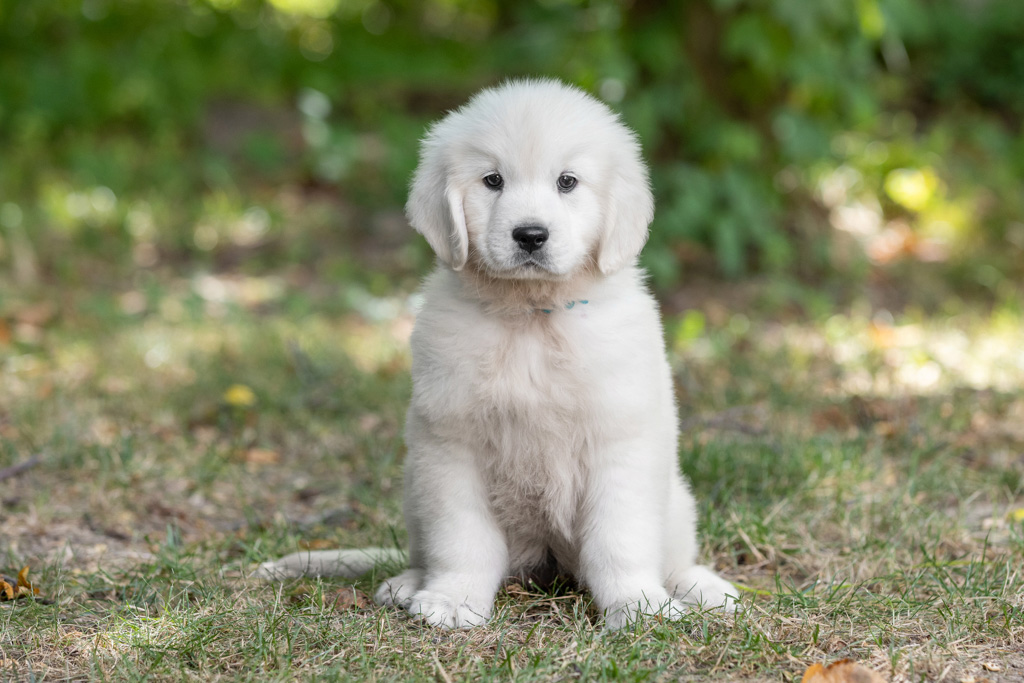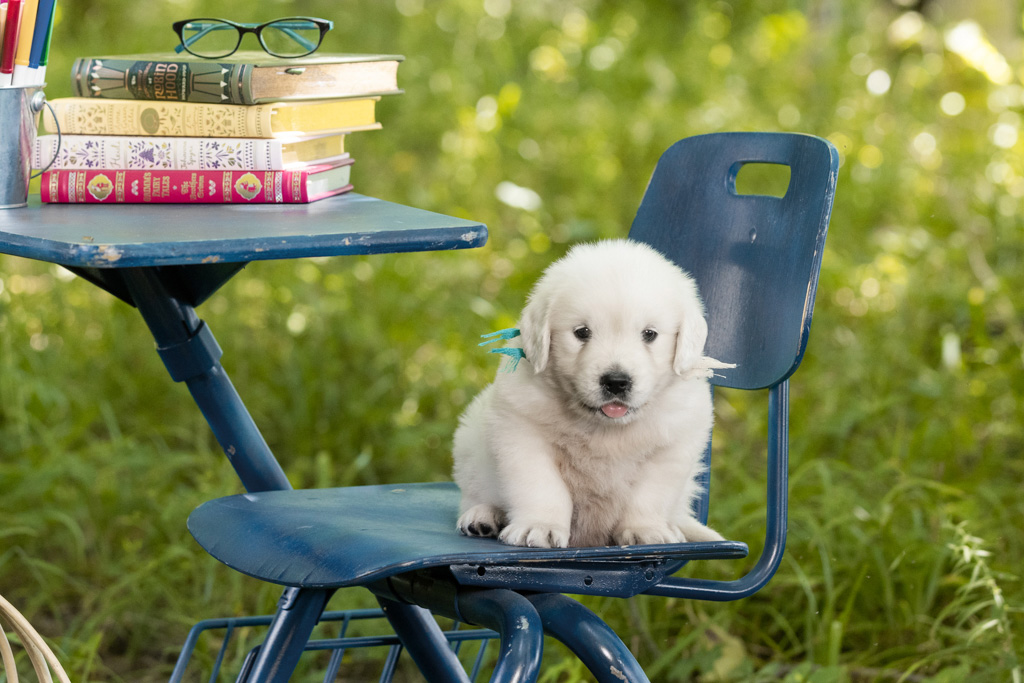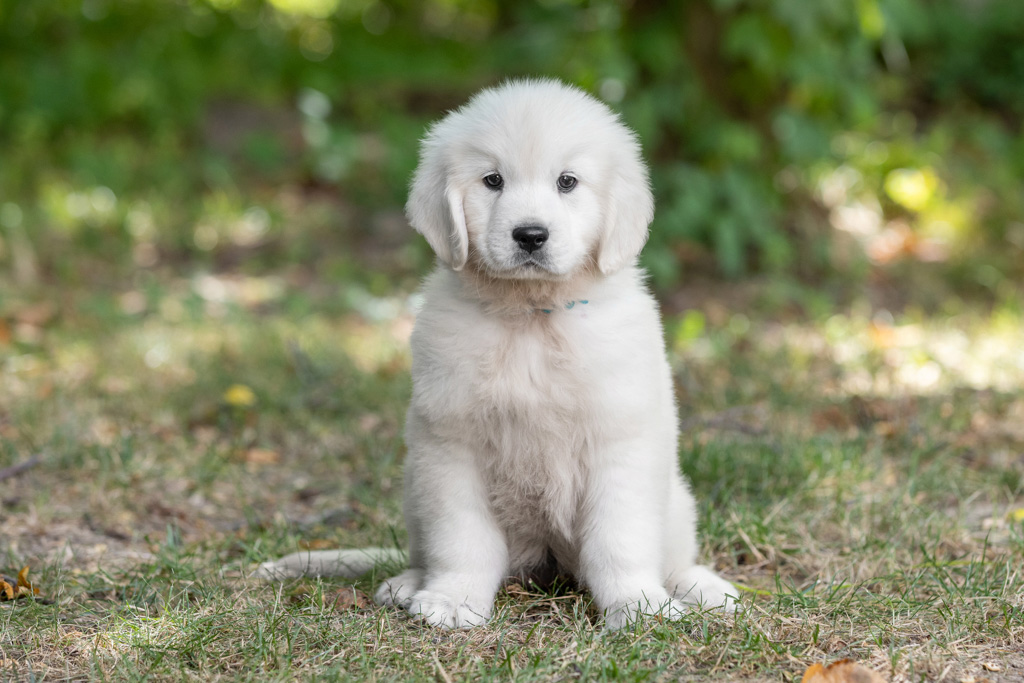Choosing the right dog toys is crucial for your English Cream Golden Retriever’s growth. These toys do more than entertain. They play a vital role in your pet’s development.
Dog toys can support physical and mental growth. They help build muscles and stimulate the mind. This is essential for a healthy, happy dog.
Interactive dog toys are particularly beneficial. They keep your dog engaged and prevent boredom. This can lead to a more well-rounded pet.
Chew toys are a must for puppies. They aid in teething and jaw development. This makes them an essential part of your puppy’s growth.
Healthy dog toys are made from safe, durable materials. This ensures your pet’s safety during playtime. It’s important to choose toys that won’t break easily.
Puzzle toys can boost cognitive skills. They challenge your dog to think and solve problems. This enhances mental agility and keeps your dog sharp.
Toys that encourage physical activity are also important. They help build strength and coordination. This is vital for your dog’s overall health.
In this guide, we’ll explore the best dog toys for growth. You’ll learn how to choose toys that fuel your pet’s development.
Understanding Growth in English Cream Golden Retrievers
English Cream Golden Retrievers are known for their gentle nature and intelligence. These attributes demand special attention during growth. It’s essential to understand their developmental stages to provide proper care.
In the early months, their growth is rapid. Puppies experience significant physical and cognitive changes. Proper nutrition and environment are vital during this period.
Several factors can influence their development. These include genetics, diet, exercise, and mental stimulation. Providing balanced attention to each area ensures healthy growth.
A key to ensuring growth is observing your retriever’s behavior and needs. Regular vet visits are essential to monitor their physical development. This proactive approach helps you address any concerns early.
To foster growth, focus on these key elements:
- Balanced diet with essential nutrients
- Regular physical exercise
- Mental stimulation through varied activities
- Social interactions with people and other animals
- Regular health check-ups with a veterinarian
Each growth stage presents unique challenges. Understanding these helps in providing the necessary support. As your retriever matures, adapt your care strategies to match their evolving needs.
Why the Right Dog Toys Matter for Growth
Choosing the right dog toys is crucial for the growth and development of English Cream Golden Retrievers. Toys do more than entertain; they offer a host of developmental benefits.
Toys provide mental stimulation, which is vital for cognitive development. Engaging a dog’s mind can prevent boredom and encourage problem-solving skills.
Physical play with toys aids in muscle and bone development. This is particularly important for larger breeds like retrievers, helping them grow strong and healthy.
The right toys also support behavioral training by reinforcing positive behaviors. They can be integral in teaching commands and providing rewarding experiences.
When selecting toys, focus on the following features:
- Durability to withstand active play
- Safety to prevent choking and ingestion of parts
- Versatility to encourage various types of play
- Size appropriateness to ensure safe interactions
- Material suitable for chewing and stimulation
By prioritizing these criteria, you can greatly contribute to the holistic growth of your retriever. Quality toys will enrich their lives, promoting happiness and well-being.
Key Features of Healthy Dog Toys
Healthy dog toys are vital in nurturing your English Cream Golden Retriever’s growth. The right features ensure safety and longevity in playtime.
Durability ranks high when choosing dog toys. Sturdy materials like rubber or heavy-duty nylon can withstand vigorous play and chewing.
Safety is paramount. Ensure toys are non-toxic and free from harmful chemicals that might be ingested by your pet.
Toys with various textures can provide sensory stimulation. This keeps your dog engaged and promotes dental health by reducing plaque.
Consider toys that offer interactive features. These can include squeakers or treat dispensers that engage and entertain your dog.
Here are some key features to look for in healthy dog toys:
- Non-toxic and eco-friendly materials
- Diverse textures for sensory engagement
- Interactive elements to stimulate interest
- Size-appropriate designs to prevent choking
- Easy-to-clean surfaces for hygiene
Choosing toys with these features will help create a safe, fun, and enriching environment. These toys will not only entertain but also contribute to your dog’s overall well-being.
Chew Toys for Puppies: Supporting Teething and Jaw Development
Chew toys play a crucial role in a puppy’s early development. As English Cream Golden Retriever puppies grow, they experience teething phases, which can be uncomfortable.
These toys provide a safe outlet for natural chewing instincts. Proper chew toys can alleviate teething pain, offering relief to their tender gums.
Look for toys designed specifically for teething puppies. These are often softer, providing a gentle yet effective chew experience.
While helping with teething, chew toys also support jaw strength. They stimulate the muscles, promoting healthy development crucial for your puppy’s growth.
Ensure the toys are the right size, preventing choking hazards. Opt for toys that are small enough to handle but large enough not to swallow.
Consider these important features for choosing chew toys:
- Made of flexible yet durable material
- Gentle on sensitive puppy gums
- Large enough to prevent accidental swallowing
- Various textures for enhanced chewing
- Easy to clean to maintain hygiene
Selecting the right chew toys not only aids in teething but also strengthens your puppy’s jaw. This not only helps reduce unwanted chewing on furniture but also encourages proper behavior.
Interactive Dog Toys: Stimulating Mind and Body
Interactive dog toys are fantastic for keeping English Cream Golden Retrievers mentally and physically stimulated. These toys challenge their intelligence and provide an outlet for their abundant energy.
Such toys often involve puzzles or tasks. Dogs must figure out how to access a treat or solve a problem, which stimulates their mind and enhances their cognitive abilities.
These toys can range from treat-dispensing balls to complex puzzle boards. They encourage problem-solving and persistence in puppies and adult dogs alike.
Engaging in interactive play can also prevent boredom. This reduces the chances of destructive behavior caused by too much idle time.
For active engagement, select toys that require your Golden Retriever to think and act. Toys that react to the dog’s movement, like those that bounce erratically, can captivate their attention.
Here’s what to consider when choosing interactive dog toys:
- Easy to use but challenging enough to engage
- Durable and safe materials
- Versatile options for different skill levels
- Encourages active play and mental exercise
- Facilitates owner-dog interaction
By incorporating interactive dog toys into your Retriever’s daily routine, you contribute significantly to their mental and physical growth. This kind of stimulation strengthens the bond between you and your pet. It allows for shared moments of joy and learning. These toys provide not just entertainment but a meaningful development experience.
Puzzle Toys: Boosting Cognitive Skills and Problem-Solving
Puzzle toys are invaluable for boosting cognitive skills in English Cream Golden Retrievers. These toys present challenges that encourage dogs to think and strategize.
Such toys often involve hidden compartments or pieces that require manipulation to access a reward. This process engages their problem-solving abilities and provides a fulfilling mental workout.
The complexity of puzzle toys varies. It’s important to start with simpler designs for puppies or beginners and gradually introduce more challenging options as they master each level.
Puzzle toys also serve to alleviate boredom by engaging dogs in activities that mimic natural behaviors such as foraging. This type of engagement can be extremely satisfying for your Retriever.
In addition, these toys can play a crucial role in reducing anxiety. By focusing their energy on solving puzzles, dogs can improve their focus and calmness.
To choose the most effective puzzle toys, consider the following:
- Adjustable difficulty levels to match your dog’s skill
- Sturdy construction to withstand enthusiastic play
- Multiple functions, such as treat dispensing and interactive elements
- Safe, non-toxic materials for hours of worry-free play
- Encourages exploration and independent play
Incorporating puzzle toys into your dog’s routine promotes a more enriching environment. These toys are not only entertaining but they also serve as a powerful tool for mental development. Plus, they offer endless opportunities for you to bond with your dog through shared challenges and victories. As your Retriever’s skills grow, you’ll witness increased confidence and enthusiasm in their play.
Toys for Physical Activity: Building Strength and Coordination
Toys that promote physical activity are essential for the growth and overall health of English Cream Golden Retrievers. These energetic dogs require toys that encourage movement, helping them to build strength and improve coordination.
Fetch toys are excellent for stimulating both physical and mental health. Retrievers naturally love to chase, making ball or frisbee sessions an exciting and beneficial activity. These toys help strengthen muscles and hone agility.
Tug-of-war toys are equally effective. These toys encourage interaction and exercise, fostering a strong bond between you and your dog. They also help in developing jaw strength and endurance.
For those hot summer days, consider water-friendly toys. English Cream Golden Retrievers typically enjoy swimming, and toys designed for water use can enhance their fitness while keeping them cool and entertained.
Incorporating a variety of toys ensures a well-rounded physical workout. It is essential to rotate these toys to maintain interest and engagement in your Retriever’s play routine.
When selecting physical activity toys for your dog, keep in mind:
- Durability to withstand vigorous play
- Appropriately sized to prevent choking hazards
- Textures or designs that encourage grip and pull
- Bright colors for easy visibility in parks or fields
- Flexibility in use, indoors and outdoors
Physical activity toys help reduce the risk of obesity by keeping your dog active. Over time, such toys contribute to better health outcomes, ensuring your Retriever stays fit and happy.
Combining exercise with mental engagement through these toys supports a balanced and enjoyable lifestyle. Ultimately, active play enhances your dog’s strength, coordination, and overall well-being, helping them thrive in a nurturing and stimulating environment.
Training Toys: Reinforcing Positive Behaviors and Obedience
Training toys play a crucial role in reinforcing positive behaviors and obedience in English Cream Golden Retrievers. These intelligent dogs thrive when mentally stimulated, making training toys an important addition to their routine.
Clickers paired with reward-based toys can effectively teach commands. Using a clicker helps mark the precise moment of correct behavior, while a treat-dispensing toy provides instant positive reinforcement.
Rope toys are excellent for teaching fetch commands and promoting good retrieval skills. This form of training not only builds obedience but also strengthens the bond between you and your dog during interactive sessions.
For teaching complex commands, use toys that challenge cognitive abilities. Puzzle feeders encourage problem-solving while rewarding successful attempts with treats. This approach keeps learning engaging and rewarding.
Always choose training toys appropriate for your dog’s size and strength. Durable materials ensure the toy withstands rigorous training sessions without posing a safety risk. Here’s what to consider when selecting training toys:
- Size-appropriate to prevent choking hazards
- Durable materials to endure consistent use
- Motivational features like treats or sounds
- Easy to clean to maintain hygiene
- Versatility for various training scenarios
Incorporating training toys into your routine not only enhances obedience but also enriches your Retriever’s life with continued learning opportunities. The result is a well-behaved and happy dog, eager to engage and learn in a positive, stimulating environment.
Sensory and Scented Toys: Engaging All the Senses
Sensory and scented toys are designed to stimulate a dog’s senses, ensuring a rich and engaging playtime experience. For English Cream Golden Retrievers, these types of toys provide varied stimulation, preventing boredom.
Toys with different textures can provide new tactile experiences. Soft plush toys with rough patches or rubber toys with ridges offer diverse tactile stimulation. This variety helps satisfy natural chewing instincts while keeping your dog entertained.
Scented toys are particularly appealing to a retriever’s keen sense of smell. Infusing toys with enticing scents like bacon or peanut butter can significantly enhance a dog’s interest, encouraging longer play sessions.
Furthermore, toys that make noise, such as squeakers or crinkly elements, can captivate attention and entertain. Auditory stimulation from these toys adds an extra layer of engagement, ensuring a multifaceted play experience.
When selecting sensory and scented toys, consider the following features:
- Non-toxic materials to ensure safety
- Durable construction to withstand active play
- Varied textures for tactile interest
- Appealing scents to engage the sense of smell
- Auditory elements like squeakers for sound engagement
By incorporating these toys into your routine, you create an enriched environment that engages all your Retriever’s senses, contributing to mental and physical well-being.
Social and Bonding Toys: Encouraging Interaction and Play
Social and bonding toys serve a vital role in fostering a strong connection between you and your English Cream Golden Retriever. These toys are excellent tools to encourage positive interaction and teamwork.
One popular type is the tug-of-war toy. This toy not only strengthens the bond but also helps in developing your dog’s strength and coordination. Engaging in tug-of-war can instill discipline while offering an enjoyable experience for both the owner and the dog.
Another option is fetch toys. Whether you use a simple ball or a more sophisticated flying disc, fetch toys promote exercise and coordination. They also leverage your retriever’s natural retrieving instincts, ensuring they remain active and healthy.
Consider toys designed for group play if there are multiple dogs in your household. These toys often facilitate sharing and cooperation, essential skills in a social setting.
When choosing social and bonding toys, look for:
- Durable materials for frequent use
- Easy-to-clean surfaces to maintain hygiene
- Safe sizes to prevent choking
- Lightweight for easy handling
- Bright colors for enhanced visibility during play
These toys not only boost physical activity but also enrich the social fabric of your dog’s environment, nurturing well-rounded development.
Water-Friendly and Outdoor Toys: Enhancing Fitness and Fun
English Cream Golden Retrievers often have a natural affinity for water. Water-friendly toys can transform a simple swim into an invigorating exercise that boosts fitness.
Floating toys are perfect for water play. These toys stay buoyant, allowing your retriever to fetch and retrieve with ease, enhancing their swimming skills and stamina. Look for brightly colored toys so they remain visible in the water.
Another option is water-fetch toys designed to be thrown long distances. These encourage your dog to swim further, promoting both strength and agility. They provide a fun way to improve endurance while enjoying the outdoors.
Consider outdoor toys like frisbees, which are excellent for wide-open spaces. These toys encourage jumps and sprints, improving your dog’s coordination and agility.
When selecting water-friendly and outdoor toys, keep in mind:
- Durability in water conditions
- Non-toxic materials to ensure safety
- Bright colors for visibility in different environments
- Lightweight design for easy carrying and throwing
With the right toys, outdoor adventures become a fantastic way for retrievers to develop both physically and mentally.
Safety, Maintenance, and Toy Rotation Tips
Ensuring the safety of your English Cream Golden Retriever during playtime is crucial. Always choose toys made from non-toxic materials. This reduces the risk of harmful ingestion if the toy breaks apart.
Regularly inspect toys for wear and tear. Damaged toys can pose a choking hazard, especially for enthusiastic chewers. Replace any toy that shows significant wear to maintain a safe play environment.
Maintaining the cleanliness of dog toys is also important. Regular washing prevents the buildup of bacteria and germs. Choose toys that are easy to clean, such as those that are dishwasher-safe or easily washable.
To keep your dog engaged and interested, rotate their toys regularly. This prevents boredom and stimulates new interest. Here are tips for effective toy rotation:
- Change toys every week to maintain novelty.
- Rotate between different types (e.g., chew, interactive, and fetch toys).
- Observe which toys your dog prefers and include favorites in the rotation.
With these practices, you ensure a safe, clean, and stimulating play environment for your pet.
Choosing the Best Dog Toys for Your Retriever’s Life Stage
Selecting the right toys for your English Cream Golden Retriever depends on their life stage. Puppies, adults, and seniors have different needs. Each stage benefits from specific types of toys that aid in development, health, and enjoyment.
For puppies, focus on toys that assist with teething and exploration. Chew toys and soft plush toys are excellent choices for soothing gums. They also help them learn about different textures and sounds.
Adult retrievers thrive with more challenging toys. Interactive and puzzle toys stimulate their minds and bodies. These types of toys can harness their energy and focus it into constructive playtime activities.
Senior dogs require toys that cater to a gentler play experience. Look for toys that promote joint health and maintain engagement without straining them. Soft toys or those with easy-to-access treats can be beneficial.
Here’s a quick guide to help with selection:
- Puppies: Soft chew toys, teething toys.
- Adults: Interactive toys, puzzle toys.
- Seniors: Soft, joint-friendly toys.
Tailoring toy choices to your retriever’s life stage ensures that they remain healthy, happy, and engaged throughout their lifetime.
Frequently Asked Questions About Dog Toys for Growth
Understanding dog toys for growth can be overwhelming. Here we address some common questions that pet owners often have.
What are the best dog toys for growth? Toys that promote physical activity, mental stimulation, and healthy chewing are ideal for growth. Look for toys that challenge your dog and encourage interactive play.
Can toys help with dental health? Yes, certain toys are designed to support dental health. Chew toys can help reduce plaque and tartar buildup, keeping teeth clean and gums healthy.
How do I know if a toy is safe for my dog? Always check for durable materials and size-appropriate toys to prevent choking. Avoid toys with small detachable parts that could be ingested.
How often should I rotate my dog’s toys? Rotating toys weekly helps maintain your dog’s interest and prevent boredom. This variety ensures continual mental and physical engagement.
Are scented or flavored toys beneficial? Yes, these toys can enhance sensory experiences and entice play. They engage a dog’s smell and taste, providing a fuller sensory experience.
Conclusion: Creating a Nurturing and Enriching Environment
Crafting a nurturing environment for your English Cream Golden Retriever involves careful consideration. Choosing the right dog toys is a key component of this process. These toys not only support their physical growth but also cater to mental and emotional health.
Each toy should serve a purpose, whether it’s improving physical fitness, enhancing cognitive abilities, or simply providing comfort. Understanding your dog’s needs at different life stages is crucial for effective toy selection. Life changes over time, and so will your pet’s requirements.
By incorporating a variety of toys that promote healthy growth, you ensure your retriever thrives in a balanced and enriching environment. Your dedication will foster an enduring bond, making each moment memorable and joyful for both you and your pet.
